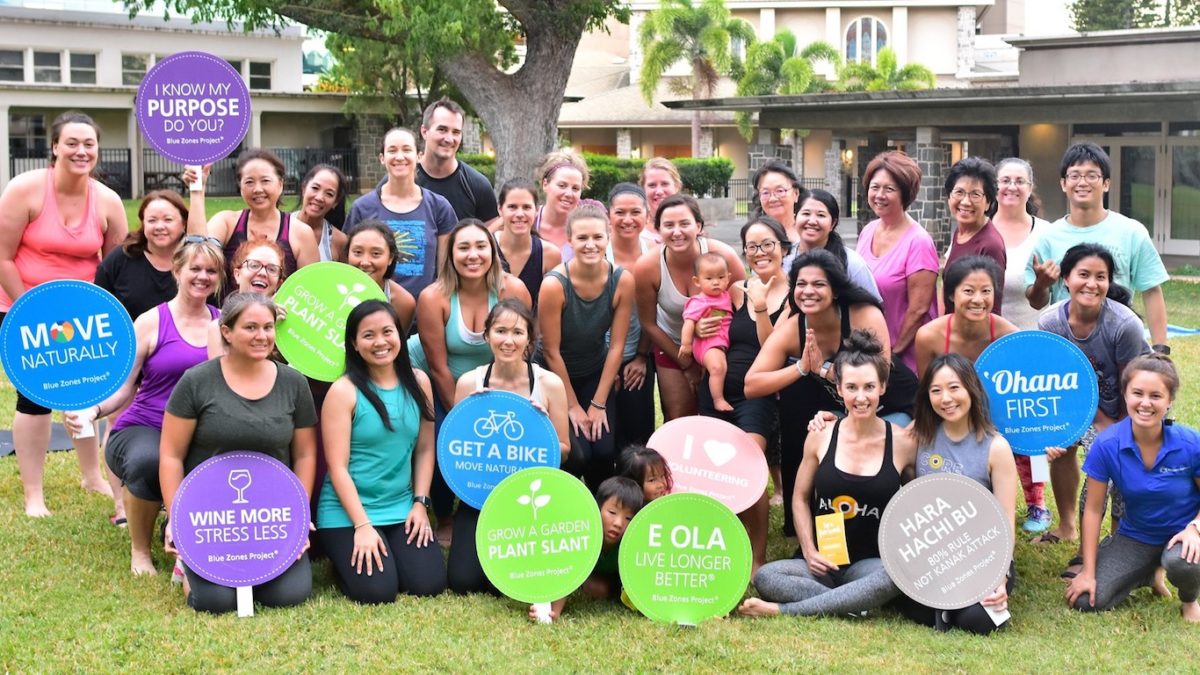Blue Zones Project shifts balance of community well-being across Hawai‘i

Over the past seven years, the state of Hawai’i has reshaped the well-being trajectory of more than half its population, improving the health of individuals and increasing overall community resilience to withstand public health challenges such as the COVID-19 pandemic.
Across multiple islands, our population health initiative Blue Zones Project by Sharecare has encouraged individuals to make lifestyle changes and persuaded communities to implement modifications to the built environment to make healthier choices easier.
Since Blue Zones Project was launched across Hawai‘i in partnership with Hawai‘i Medical Service Association (HMSA) in 2015, Sharecare has introduced more than half the state’s population to this community well-being transformation initiative. Further, seven communities have received certification as Blue Zones communities as a result of achieving high levels of engagement with Blue Zones Project’s well-being transformation efforts.
In recent years, data from Sharecare’s Community Well-Being Index have shown promising trends. Hawai‘i has remained one of the ‘healthiest’ states in the country, according to Sharecare’s annual state well-being rankings. Additional analysis, accounting for 11 key health risks and comparing the performance of Blue Zones Project communities with non-Blue Zones Project communities, indicates that the Blue Zones Project communities experienced nearly 10% fewer risks than would have been expected without Sharecare’s interventions—a clear sign that these towns and cities are building well-being into their cultures.
Below are some of the transformation stories that positioned Hawai‘i Blue Zones Project community residents to enjoy a healthier and higher quality of life with lower rates of chronic disease.
Kapolei-‘Ewa
Located in the western part of O‘ahu, the Kapolei-‘Ewa community has notched several wins as a result of their participation in Blue Zones Project.
The percentage of adult residents engaging in physical activity increased from 72% in 2017 to 75.7% in 2019. Residents engaging in physical activities such as gardening, and walking increased to 75.5% during the same timeframe. The diabetes rate decreased to 10% from 12.5%, and high cholesterol rates decreased to 30% from 36.6%. Finally, adult smoking rates decreased to 12.2% from 14.4%.
4M (Mānoa-Makiki-McCully-Mōʻiliʻili)
In these four Honolulu neighborhoods, changes to the built environment have made it much easier for residents to engage in physical movement rather than sedentary lifestyles.
Three-and-a-half new miles of bike infrastructure have been added to three streets, and 34 new rental bike stations have been built, contributing to nearly 40% of residents saying it is easier to walk or bike in their community compared with five years ago.
Wahiawā
In this O‘ahu community, the Blue Zones Project team partnered with local businesses and schools to teach students gardening skills and encourage them to walk to school, increasing physical activity during the school day.
More adults are getting out of their cars as well. In Wahiawā, the percentage of adults using public transportation or bicycles to actively commute to work increased from 10.2% in 2017 to 12.5% in 2019.
Central Maui
With Blue Zones Project support, Maui County has invested $3.8 million in redevelopment projects to improve walkability, bikeability, and livability.
The local team also has brought leaders from academia, industry, and government together to form the county’s first food policy council—the Maui Nui Food Alliance — focusing on food access and sustainability across Maui County. With Blue Zones Project’s help, the Maui Food Bank nearly doubled the amount of produce it distributed, from 394,000 pounds in 2017 to 661,000 pounds in 2019.
North Hawai’i, East Hawai’i, West Hawai’i
Between 2015 and 2019, Hawai’i County – consisting of the communities of North Hawai’i, East Hawai’i, and West Hawai’i – invested nearly $100 million in Complete Street projects to improve walkability, bikeability, and livability.
In partnership with Blue Zones Project, the Hawai‘i Island Food Alliance, the Hawai‘i Food Basket food bank, and local non-profit The Kohala Center won a $350,000 grant to fund a mobile produce market that provides produce and nutrition education in 12 U.S. Department of Agriculture-designated food deserts across the county—just one use of more than $104 million in grants awarded to the county since 2015.
As a result of local food access efforts, produce distribution by the Hawai‘i Food Basket more than doubled between 2015 and 2019, and the number of farmers markets accepting Supplemental Nutrition Assistance Program benefits has increased by 50%.
Thanks to their engagement with Blue Zones Project, the leaders and residents of Hawai‘i’s certified Blue Zones communities have tipped the scales toward long-term health and well-being. Far from fleeting gains that will fade with time, these changes have altered the fabric of the communities with preventive, yet sustainable measures that will impact lives for generations to come.